
Polyrhythm is the use of multiple rhythmic divisions of the same cycle played simultaneously to create new, complex rhythms. Polyrhythm can be found in traditional African music, classical music, jazz, and more daring rock and pop tracks, and it can give pieces rhythmic qualities that can’t be achieved with standard compositional tools.
In this beginner’s guide to using polyrhythms we’ll look at some examples of polyrhythms in different musical styles, and show you how you can use this technique yourself to make exciting new rhythms, like this:
Jump to these sections:
- What are polyrhythms?
- Polyrhythmic ratios
- More complex polyrhythms
- Musical application of polyrhythm
- Examples of polyrhythm in recorded music
- Techniques that aren’t polyrhythmic
Follow along with this tutorial using a free demo of BATTERY 4, a powerful drum sampler from Native Instruments.
What are polyrhythms?
A polyrhythm is a type of rhythm in which two or more different rhythms are played simultaneously, creating a complex and layered sound. Polyrhythms can be used to create a sense of excitement and energy in music, and can also be used to create a sense of disorientation or unpredictability.
Polyrhythm isn’t necessarily the easiest technique to discern in a piece of music. Let’s begin by listening to a simple example of a polyrhythm that we’re going to create ourselves. Add BATTERY 4 to an instrument track in your audio editing software and load up the Afro Shop Kit.
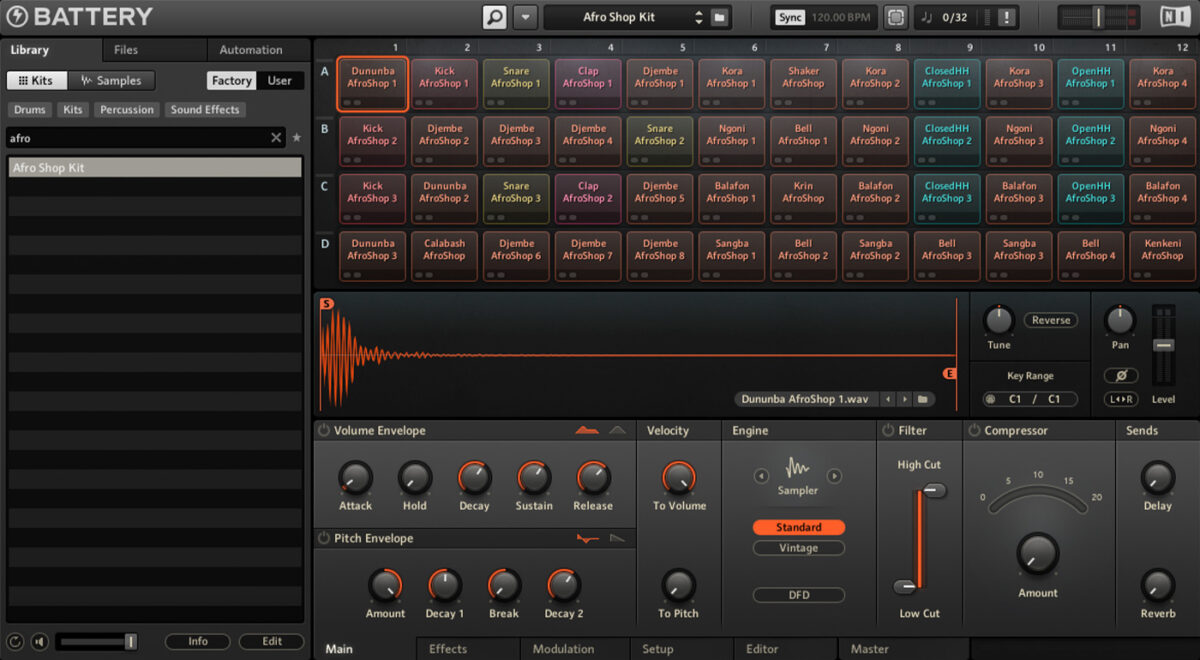
Create a single-bar clip, and add E1 djembe triggers on the first and third beats.
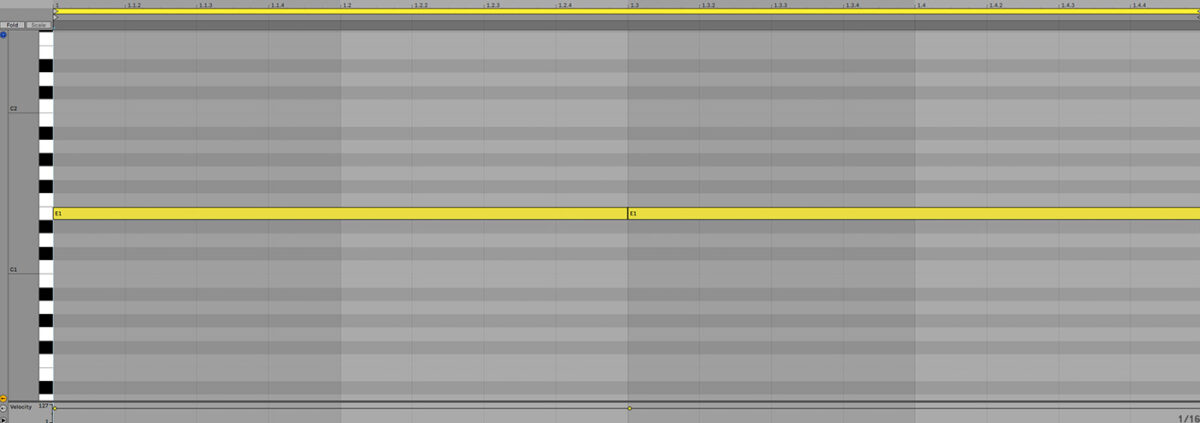
Now switch to your audio editor’s triplet grid view. In Ableton Live this can be achieved by pressing [command]+[3] on Mac or [control]+[3] on Windows, then selecting the 1/2 note Fixed Grid. This gives us half note triplets, which divides the bar into three. Place C1 dununba triggers on the three divisions.
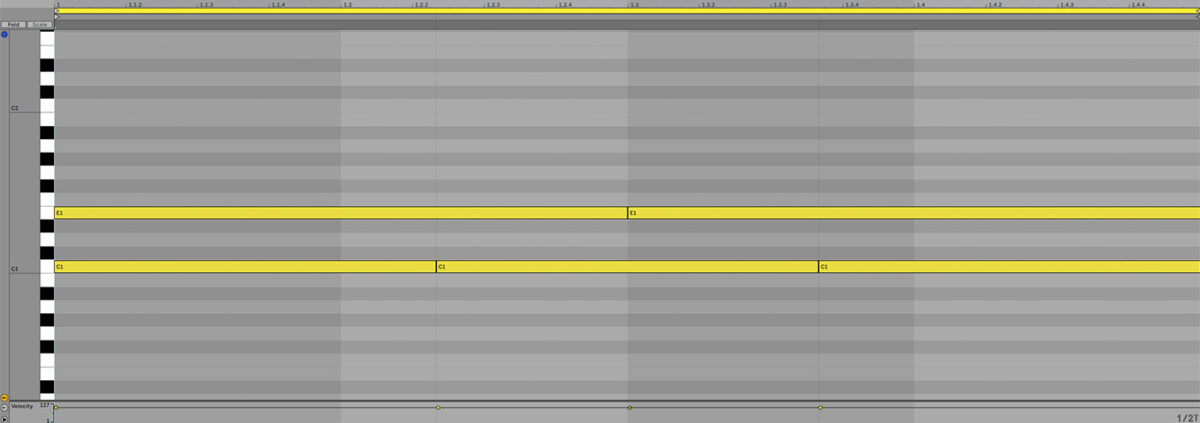
Here we have a bar divided into two equal length slices for the djembe, and three equal length slices for the dununba.
We describe this as a 3:2 polyrhythm. The first number represents the dominant rhythm and the second number the secondary rhythm. We know that this pattern is polyrhythmic, because none of the beats play at the same time, apart from at the start of the bar.
We can also tell this is polyrhythmic because three and two don’t have a common factor apart from one. Numbers which don’t divide into each other without a remainder create a polyrhythm. If we were to replace the triplet dununba triggers with notes on every beat of the bar, we’d get this:
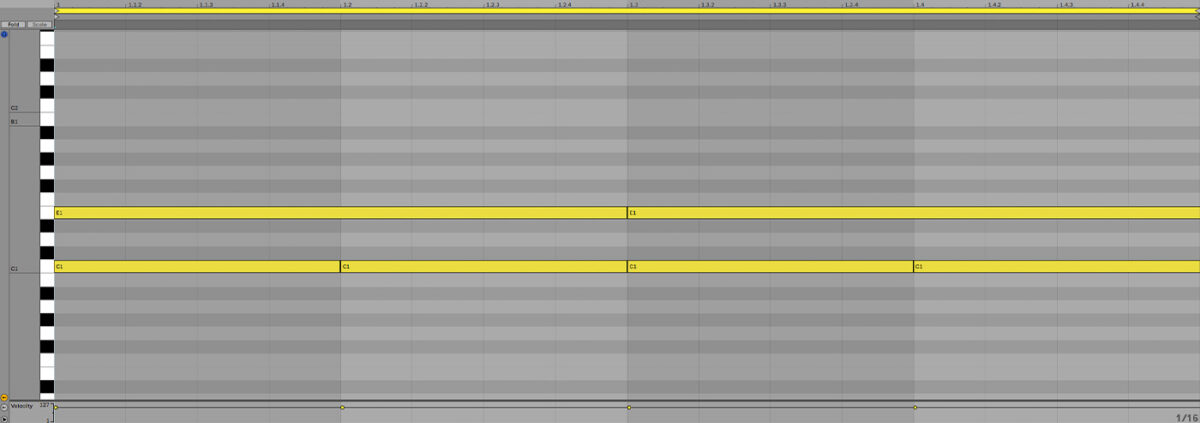
We can tell this isn’t polyrhythmic because the djembe and dununba both play at the same time on the third beat. Also, four and two have a common factor, two, so we know this pattern isn’t polyrhythmic. More importantly, it has a rigid feel that lacks the push and pull of a polyrhythm.
Polyrhythmic ratios
Polyrhythmic ratios can drastically impact the sound and feel of the polyrhythm in the music. Let’s return to our 3:2 polyrhythm composed with djembe and dununba.
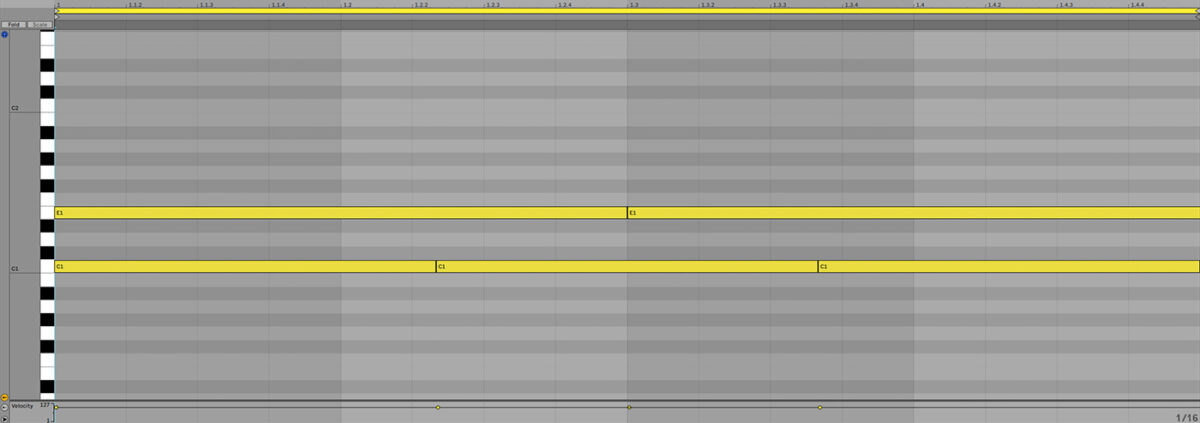
As mentioned earlier, we’d describe this as a 3:2 polyrhythm, because arguably the three note dununba is the dominant element that’s driving the polyrhythm.
If we change the instruments play so that the three-note rhythm is played by a G#1 hi-hat and the two-note rhythm is played by a C#1 kick, the kick track is arguably the more dominant rhythm.

So, we’d describe this version as a 2:3 polyrhythm. It uses the same rhythmic elements as the 3:2 polyrhythm, but it gives us a different rhythmic energy.
Let’s turn this 2:3 polyrhythm to a 4:3 polyrhythm. Edit the C#1 kicks to play on quarter notes.
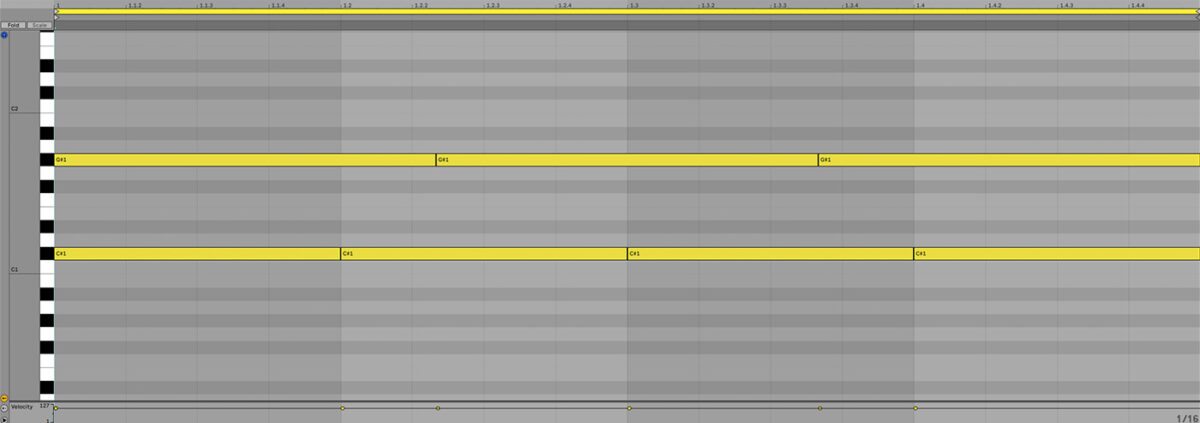
Again, this gives us a different feel.
Now let’s try putting the four notes on the E1 djembe and the three notes on the C1 dununba.
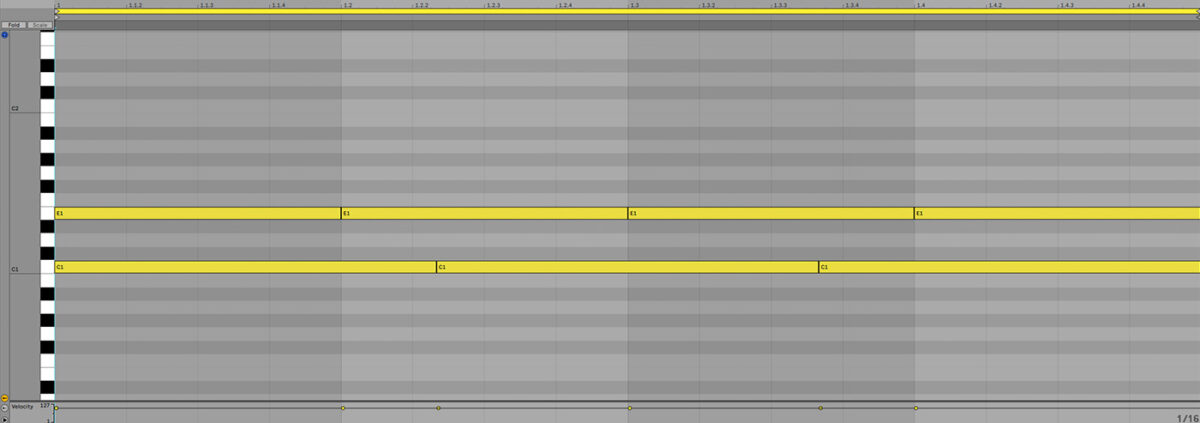
This gives us a 3:4 polyrhythm, again with its own feel.
More complex polyrhythms
So far we’ve only looked at polyrhythms that combine rhythms of three divisions and factors of two divisions. However, polyrhythms can be pushed further. Let’s try creating something more complex.
In Ableton Live we can create polyrhythms extremely easily thanks to the software’s MIDI Stretch Marker. Let’s delete all the notes we’ve entered so far, and replace them with six eighth notes playing djembe on E1.

If you highlight these notes, you’ll notice that the grey MIDI Stretch Marker appears at the beginning of the final note. Let’s drag this over to the right so that it sits at the end of the bar.
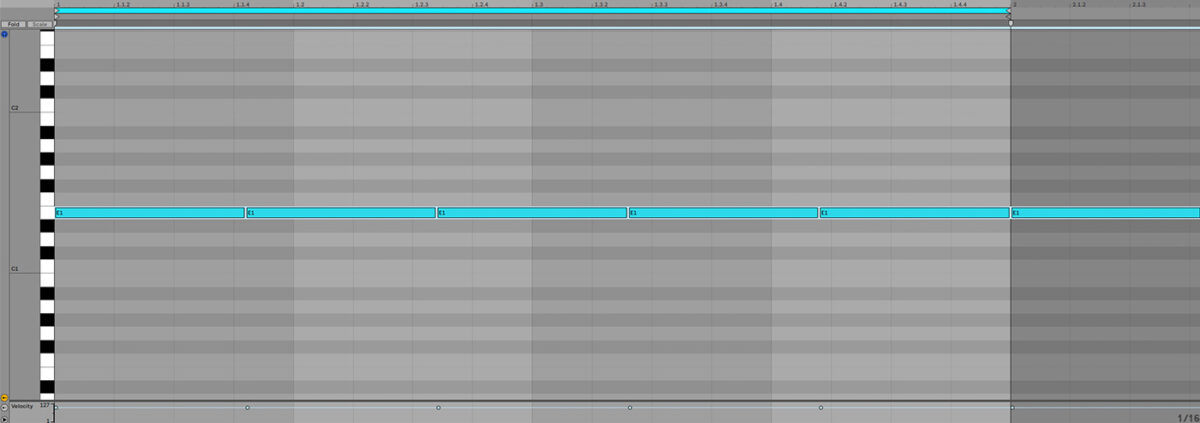
We now have five equal length notes over the course of a bar. We can delete the sixth note, which has served its purpose as being a convenient location for the MIDI Stretch Marker.
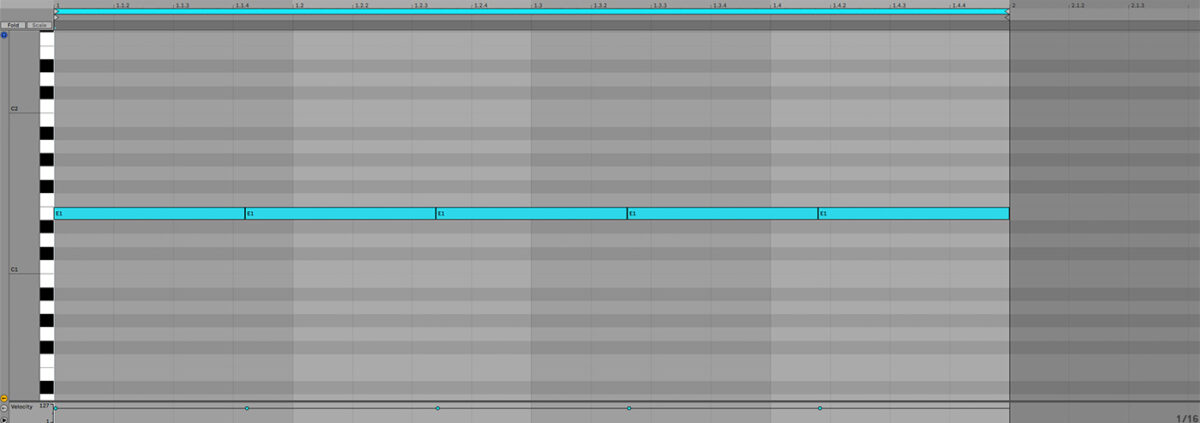
Now let’s add another rhythm to create a polyrhythm. This time create eight eighth notes playing hi-hats on G#1.
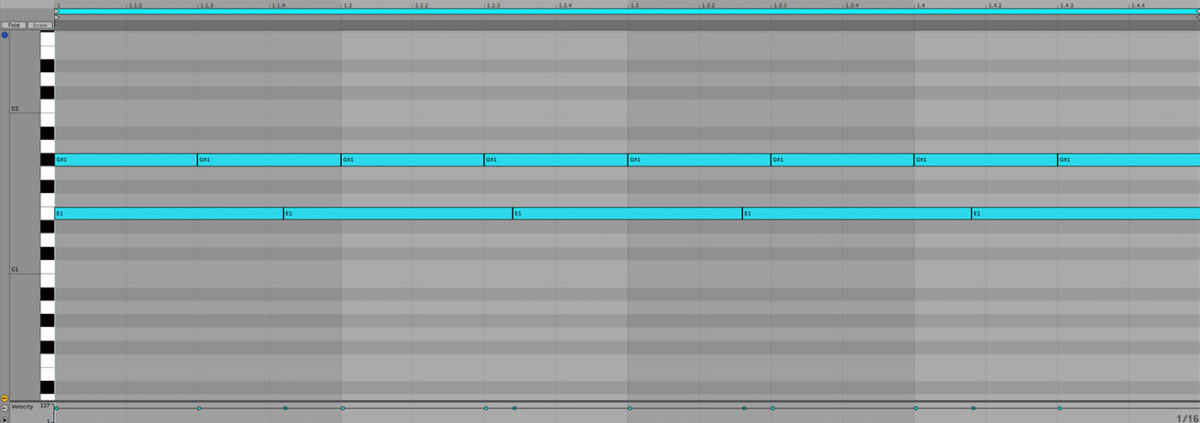
Again, drag the MIDI Stretch Marker to the end of the bar, and delete the final note.
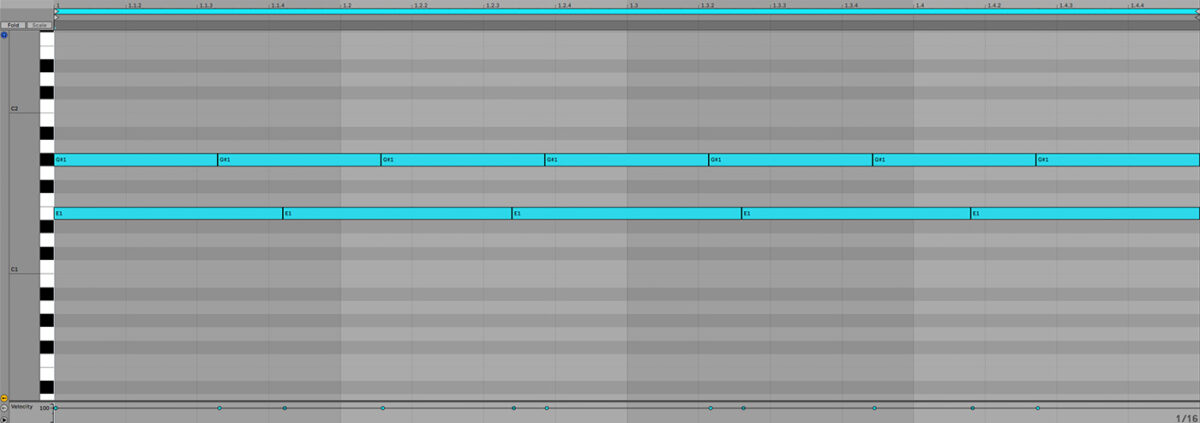
This gives us a 5:7 polyrhythm.
Let’s add another rhythm. 4 doesn’t divide cleanly into 5 or 7, so let’s add D#2 djembes on quarter notes.
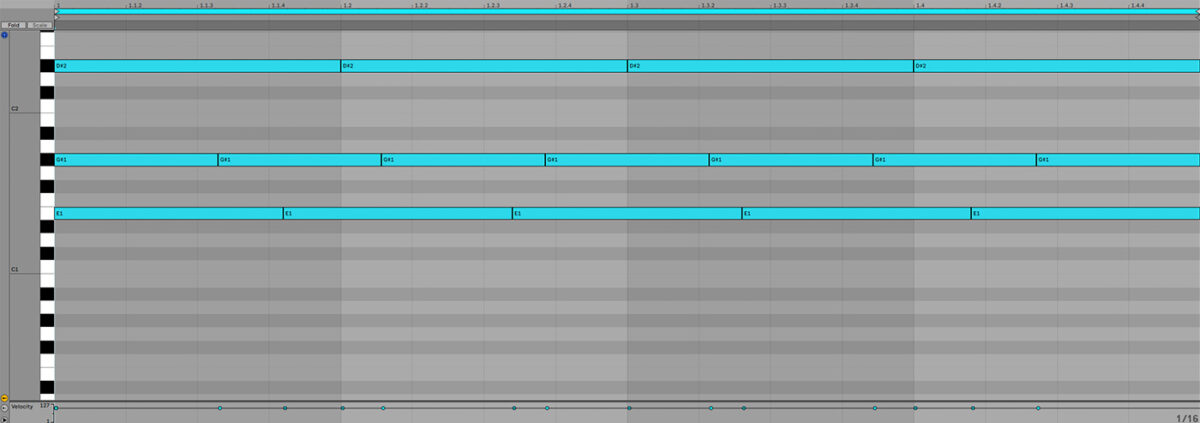
We could add more rhythms, but by this point things have already become pretty rhythmically complicated.
Musical application of polyrhythms
Thus far we’ve focused on a purely percussive exploration of polyrhythm. Let’s see what we can create if we start to use polyrhythms in a more musical context.
Begin a new project, add BATTERY 4 to an instrument track and load the 909 Multiple Kit.
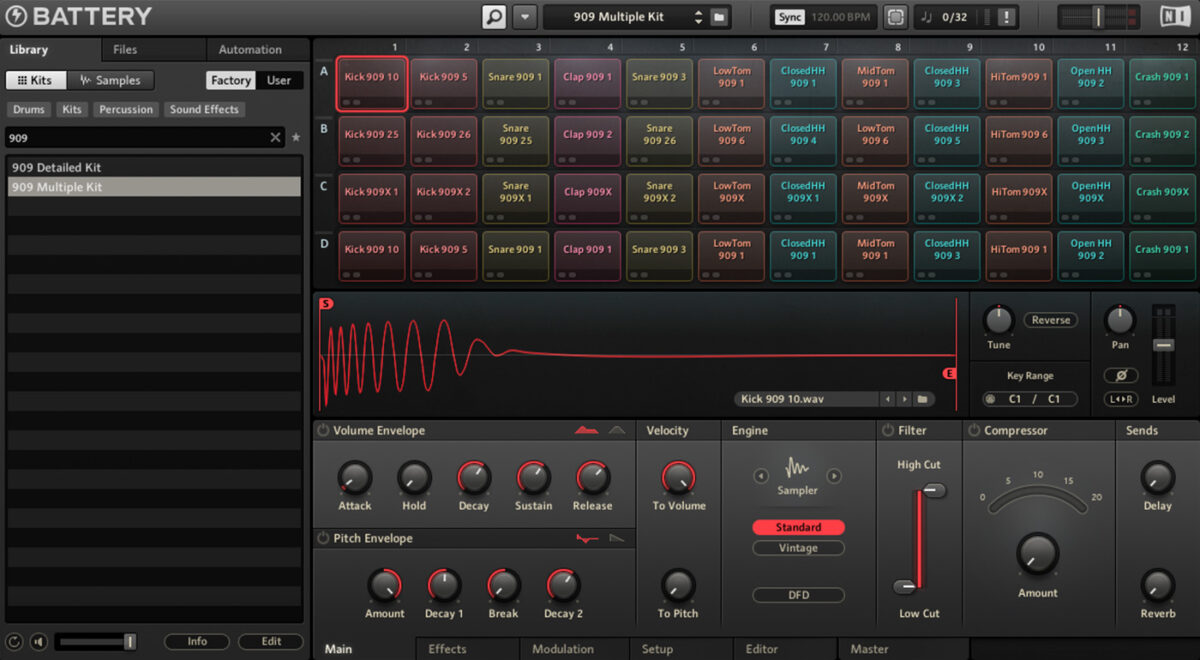
Trigger the C1 kick on quarter notes.
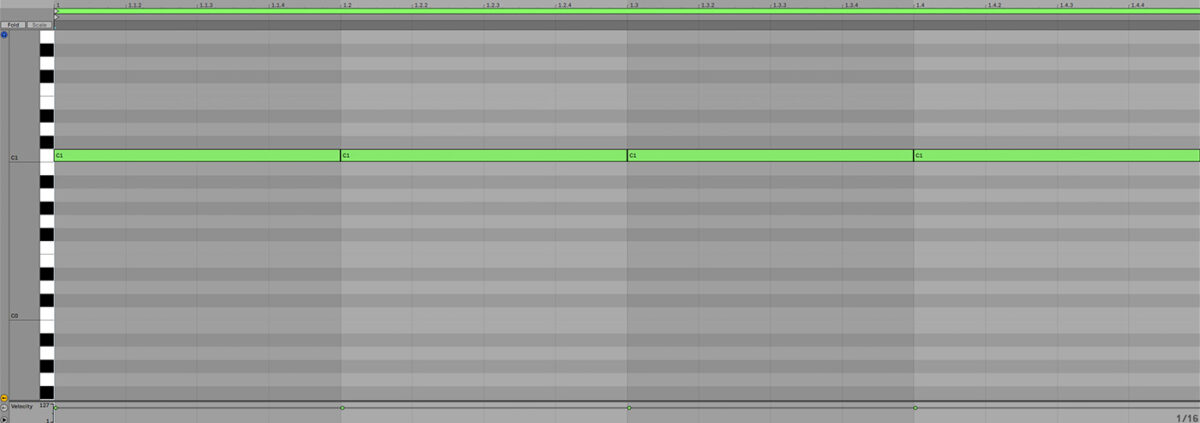
Now add an instance of MASSIVE X, open the patch browser, select the Piano / Keys tag, and load the Ballers Ivory preset.

Now add six eighth notes, then stretch them out to give us five notes.
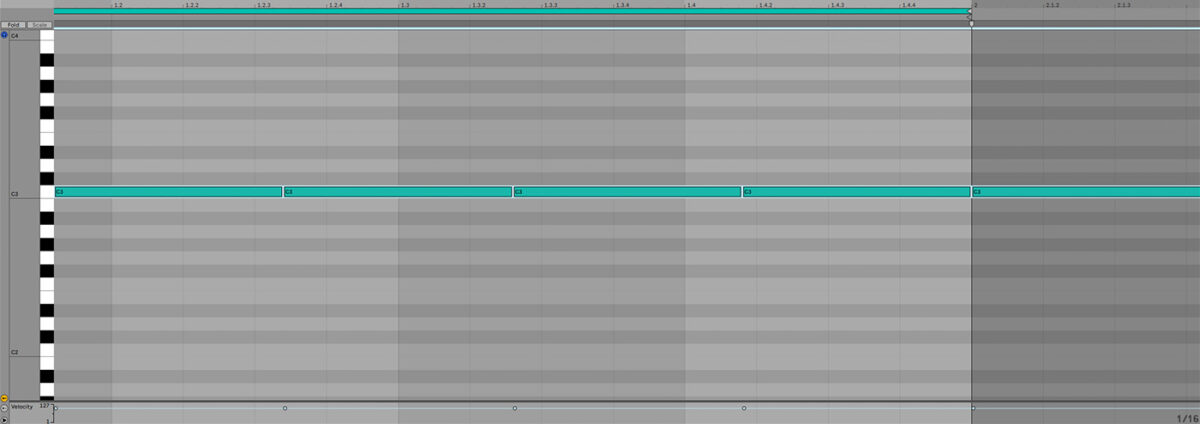
Let’s move these to notes in the scale of C minor.
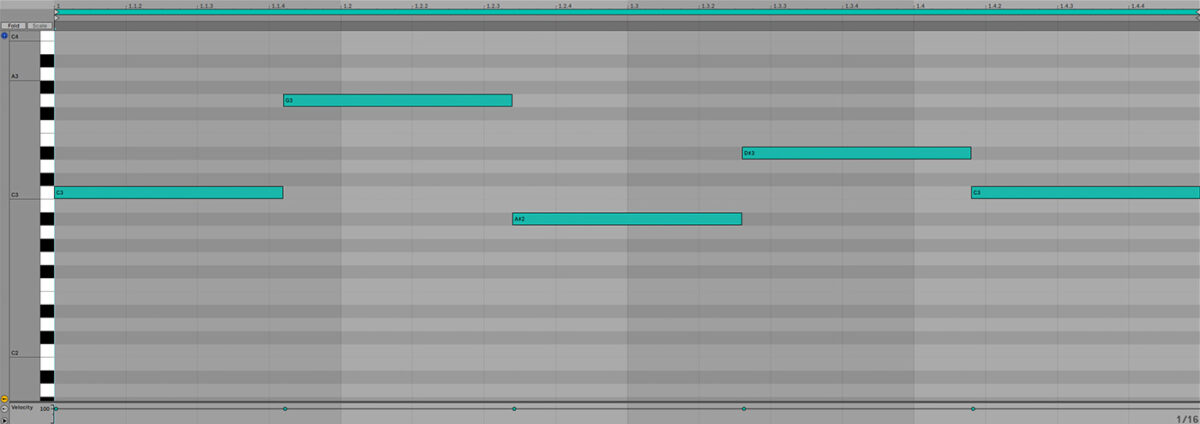
Now add another track with MASSIVE X on it and this time in the patch browser select the Bass tag and load the Dust Bag preset.

This time split the bar into three notes.
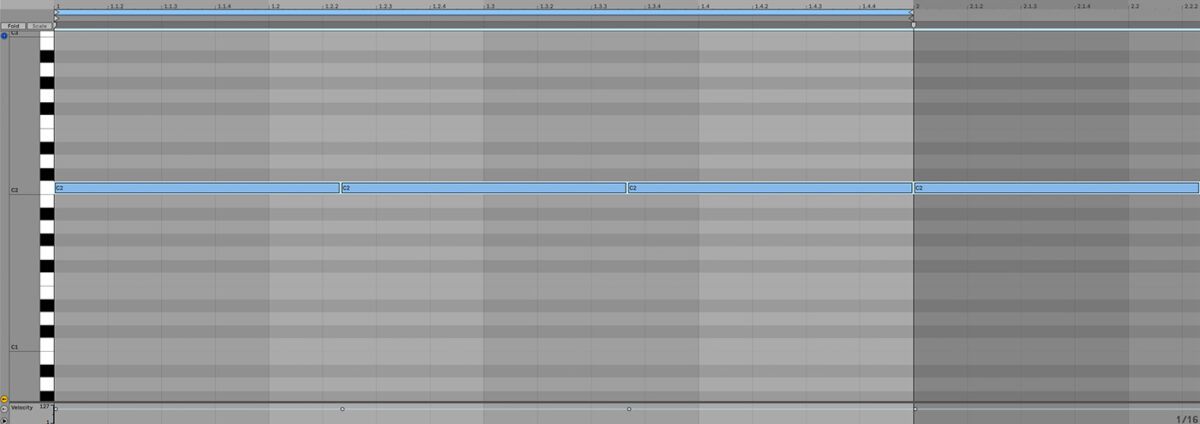
Now move these notes into the key of C minor.
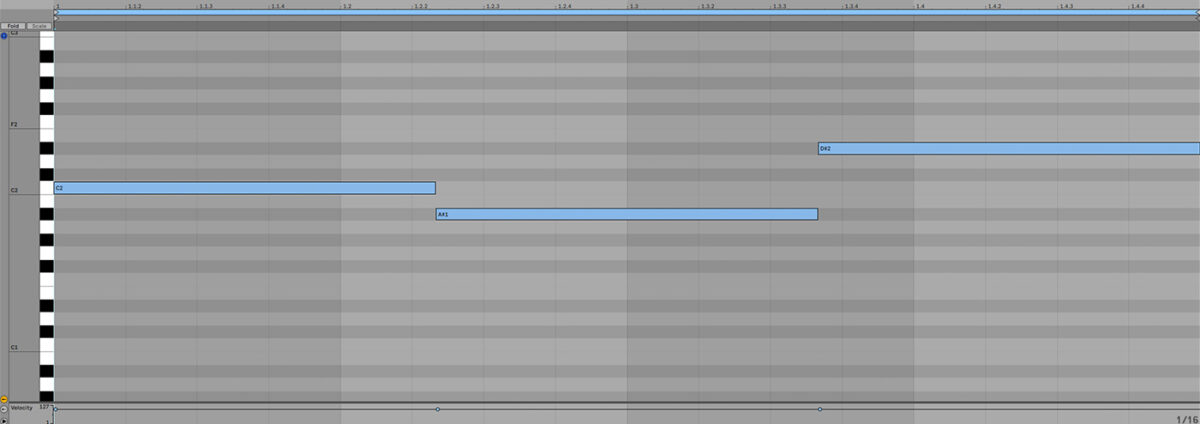
This gives us a mysterious, driving techno beat with a feel that is reminiscent of African rhythms.
Examples of polyrhythm in music
Now we have a better understanding of what polyrhythm is about, it’s easier to hear examples of polyrhythm in other people’s music, so let’s check some examples out.
An often used example of polyrhythm is Cuban percussionist Mongo Santamaria’s “Afro Blue.”
If you focus on just the track’s bass line, you might think this piece is 3/4, but let’s loop the drum intro of the track up from the first downbeat in Ableton Live.

Here you can see the same loop sliced on the 4/4 beat on the top track, and on a 6/4 on the bottom track. As you can see, this song’s fundamental beat contains a polyrhythm even before anything else has been added.
Chopin’s “Étude No. 2 in A Flat Major” features a 2:3 polyrhythm.
Nine Inch Nails’ “La Mer” has a 3/4 piano with a 4/4 drum beat, which we’d describe as a 4:3 polyrhythm, as the beat is arguably the dominant rhythm.
Radiohead’s “Daydreaming” revolves around a piano part that plays 4/4 with the left hand and 3/4 with the right hand, again a 4:3 polyrhythm.
Techniques that aren’t polyrhythmic
When bombarded with a multiplicity of sounds and rhythms it can be hard to discern what you’re listening to. Here are some examples of techniques that one might confuse for polyrhythm.
Four Tet’s “Circling” has a strong 3/4 feel, but as we can see from the transient markers when the track is warped in Ableton Live, the harp part is simply playing triplets that line up with the kick drums on each beat. The harp and the kick line up on a part of the bar that isn’t the first beat, therefore this isn’t polyrhythmic.
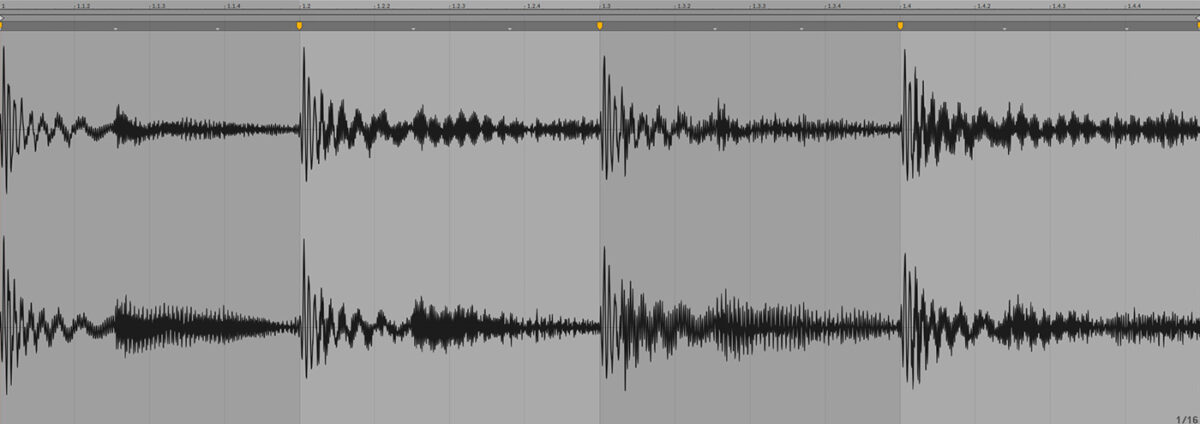
The same technique is used by Flo Rida featuring Ke$ha on “Right Round.”
Another technique that one might mistake for a polyrhythm is polymeter. Here multiple time signatures are used, but they share the same length for each beat rather than dividing the bar into different divisions. When each bar ends it restarts, causing the disparate element’s downbeats move further apart, then re-align later. They do however, always play with the same beat length, meaning the beats stay synchronized, meaning the rhythmic interplay caused by polyrhythm isn’t present.
You can hear this effect in practice in Led Zeppelin’s “Kashmir”, where the drums are 4/4 and the strings, electric guitar and electric bass play 3/4, meaning they cycle round to the start of the bar more often than the drum beat does.
Start using polyrhythm today
Here we’ve looked at how you can make your own polyrhythms in a DAW, and possible musical applications of this technique. If you’d like to learn more check out our guide on how to start producing music and 7 drum patterns every producer should know.
And if you haven’t already, you can experiment with polyrhythms yourself with a free demo of BATTERY 4.















